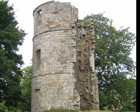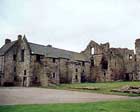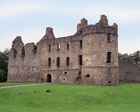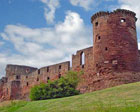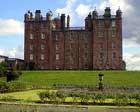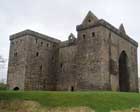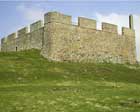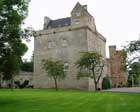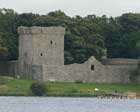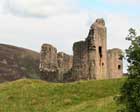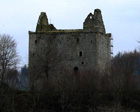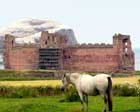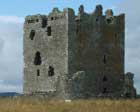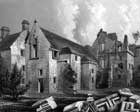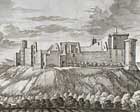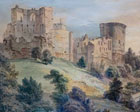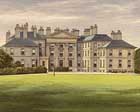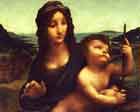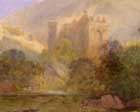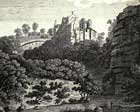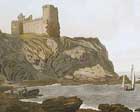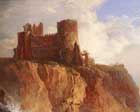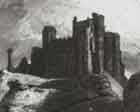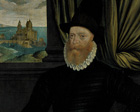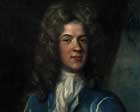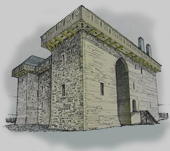 |
||
 |
||
Douglas ClanJamais arriere |
||||||
|
Clan Douglas information
|
||||||
 |
 |
 |
||||
|
Clan crest badge |
Douglas Castle |
Douglas tartan |
Clan Location |
|||
|
Aberdour Castle |
Balvenie Castle |
Bothwell Castle |
Drumlanrig Castle |
|||
|
Hermitage Castle |
Hume Castle |
Lennoxlove House |
Loch Leven Castle |
|||
|
Morton Castle |
Newark Castle |
Tantallon Castle |
Threave Castle |
|||
Clan History* In present times, His Grace Angus Douglas-Hamilton, 15th Duke of Hamilton and 12th Duke of Brandon is heir to the chiefdom of the House of Douglas, although he cannot assume the title of chief, as the Lord Lyon King of Arms requires him to assume the single name Douglas. ( The Duke of Hamilton is also the Chief of Clan Hamilton.) From the border's came one of Scotland's most powerful families. Their first mention seems to be a Sir William De Douglas who was a witness to an agreement between the Bishop of Glasgow and the Monks of Kelso abbey in 1175. Two of his sons fought in the Battle of Largs in 1263. His son James fought alongside Robert the Bruce where his prowess and bravery promoted him to one of Bruce's greatest military leaders. He was nicknamed the As King Robert lay dying, there was one promise he had failed to carry out. As part of the deal with the Pope, to get Papal oil to anoint Kings of Scotland at coronation, he had promised to carry out a crusade to the holy land. Sir James's nephew, also a James, the 2nd Earl of Douglas, attacked Newcastle in 1388 and took the Standard of Hendry Percy, the Garrison Commander. Sir James with his 6,000 men withdrew and laden with booty made back for Scotland. Percy, with his 8,000 trained soldiers gave chase and by the time he caught up it was getting dark. The Battle of Otterburn started in the moonlight, in open country, on the 5th August 1388. The Scots were so taken by surprise, they were caught celebrating and James had no time to put on his armour. They rallied to the Earl and fought bravely through the night. The battle was a famous victory with Percy and his brother among the prisoners and 1800 English lay dead. During the battle tragically James was mortally wounded and carried back to Melrose abbey where he was buried. During all this the Clan Douglas was nearing it's peak, already a well connected family they were constantly picking up lands and titles. In the early 1400's the big chance came when the grand-daughter of the last chief married David the Duke of Rothesay ( the son and heir to King Robert 3rd ). Two years later David died in mysterious circumstances. The Clan still stayed close to the throne and in 1437 Archibald the 5th Earl was appointed Lieutenant General of Scotland. Around this time the Clan was evolving into two distinct branches the Black Douglas's and the Red Douglas's, so called because of their red hair. With power comes enemies and in 1440 William the 6th Earl of Douglas was invited to dine with the 10 year old King James 2nd at Edinburgh Castle by Sir Alexander Crighton. After the banquet William and his brother David were seized and imprisoned later to be beheaded on charges of treason. As the Blacks waned the Reds grew to importance, regaining some of the Clan titles and lands. James the 4th Earl of Morton was elected the Scottish Regent in 1572 to the young King James 6th. The Regent lived an elegant lifestyle until he was arrested in 1580. He was accused of involvement in the murder of Lord Darnley, King James VI's father. The Earl was brought to trial and executed, by the guillotine he himself had introduced, in June 1581. The Clan fought on the Royalists side in the English civil war and took the British governments side in the Jacobite uprisings. William 2nd Marques of Douglas became Duke of Hamilton, through marriage in 1660, the Douglas and Angus titles passed to the Duke of Hamilton's line and by a complicated descent the Douglas lands passed to the Earls of Home. The Cameronian Regiment (not to be confused with the Camerons) consisted mainly of Douglas's, it beat of a Jacobite attack at the Battle of Dunkeld in 1689, this was shortly after the Battle of Killiekrankie where Bonnie Dundee fell. The Cameronians (Scottish Rifles) fought in the Boer War, raised 27 battalions in the first World War and fought in the second World War. They were disbanded in 1968 at Douglas Castle in Douglas. Sir Alex Douglas-Home was Prime Minister in 1963 - 64. Castles: Aberdour Castle is located on the south coast of Fife between Burntisland and the Forth Bridge. It is a semi-ruin under the protection of Historic Scotland. Originally believed to have been started in 1150 by Sir Alan Mortimer. It was built as a fortified dwelling, as certain parts of the original structure can still be seen, making this possibly the oldest standing masonry castle in the country. It came into the Douglas's hands in the 15th century. At that time it was extended and modernised by the Earl of Morton, Lord of Dalkeith. From that time there were many additions, also by the present Regent Morton in the 16th and the 7th Earl in the 17th century bringing it more to a luxury dwelling with impressive gardens and terraces overlooking the Firth of Forth. It was used as a second home until 1642. In 1725 the family bought Aberdour House, nearby, which had larger grounds and a better view. From that time the castle upkeep was neglected. It is open to visitors throughout the year and well worth a visit. Balvenie Castle Berwick Castle (story above) originally stood where the railway station stands today, there are still a few remains of the outer walls by the viaduct. Bothwell Castle is 10 miles south-east of Glasgow. In 1242 the lands around Bothwell were inherited by Walter of Moray through marriage and he started to build a castle of stone on the original fortifications. Before he was finished Bothwell was caught up in the political situation at the time. Edward the 1st had carried on after Berwick and invaded Scotland, his army captured the castle. Bowhill House Dalkeith Castle is situated just to the south of Edinburgh. It was originally built by the Grahams around 1140. It was in a good defensible position and gave both defence and early warning to the capital. Douglas Castle stood near the town of Douglas in Lanarkshire. It was the seat of Sir James Douglas, friend of The Bruce. The castle had been captured and occupied by the English and in 1307 James attacked trapping the English garrison in the chapel and recaptured his castle. Unfortunately between 1938 and 1948 an underground coal seam opened up and left the castle in such an unstable condition it had to be demolished. Drumlanrig Castle is situated about 17 miles north of Dumfries, near Thornhill. Margaret of Mar was the title of the wife of the first Earl of Douglas. When her brother Thomas of Mar died childless in 1374, she inherited the Mar estates and title. This brought Drumlanrig Castle and estate into the family where it stayed, for 450 years, until William 4th Duke of Queensberry died in 1810 without official heir. The title, estates and castle passed on to his second cousin, once removed Henry the 3rd Duke of Buccleuch. Duffus Castle Grangemuir House Hawthornden Castle is one mile from Roslin and 12 miles south of Edinburgh. It came into the Douglas family in the 14th century. It was attacked by the English twice in the mid 16th century and ownership passed to the Drummond Clan 20 years later. Hermitage Castle is located 12 miles south of Hawick. It stands guard on one of the main routes into Scotland called Liddesdale. Some of the internals on the castle date back to around 1250. From the 14th century on the castle changed owners frequently between nations. In 1335 King Edward Baliol gave it to an English supporter, Ralph Neville. Hume Castle Kilspindie Castle Lennoxlove House Loch Leven Castle is located on an island in loch leven which is just south east of Kinross. The area around the loch was an ancient Douglas stronghold awarded by King Robert 2nd in 1372. The castle is most remembered as the prison where Sir William Douglas held Mary Queen of Scots captive for a year in 1567 - 1568. It was sold in 1675 to Sir William Bruce. Lochindorb Castle Morton Castle Newark Castle Ormond Castle Roxburgh Castle Sandilands Castle Strathaven Castle Tantallon Castle Threave Castle is on an island in the river Dee, Kirkudbrightshire, 2 miles from Castle Douglas. Built by Archibald the Grim (son of Sir James Douglas, heart of Bruce fame), in 1370. After the Battle of Arkinholm King James began to systematicaly destroy all the Douglas strongholds. Threave held out, despite a seige of two months and in spite of heavy bombardment, personally supervised by the King himself. The castle only surrendered after the garrison commander was promised various payments and safe conduct. Timpendean Tower 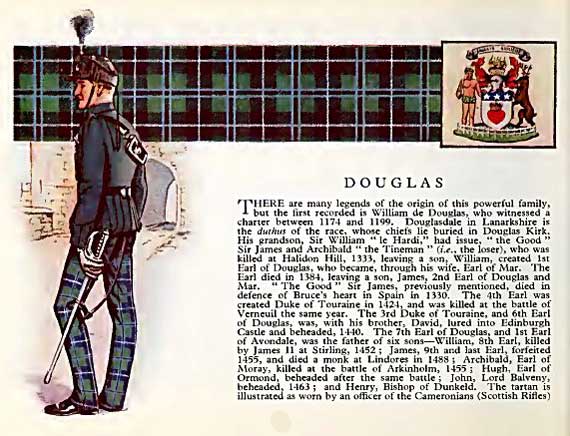 |
||||||
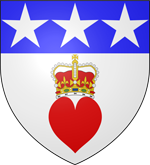 Arms of 1st Duke of Douglas
Arms of 1st Duke of Douglas
died 1761
 |
